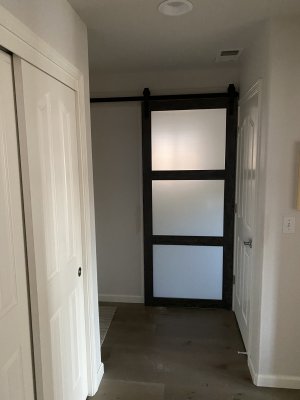- Joined
- Dec 15, 2018
- Messages
- 818
Think you'll need a hub to mount the aluminum disk. Face the back side of the disk and a suitable sized piece of material for the hub. Bolt them together with counter sunk heads in the disk, locktite the screws. Then face the front, form a register for the hole in the disk and bore the hub in one operation to reduce runout.
I had sufficient 4 inch stock to make the hub and plate in one piece but did the last operations in one setup and can't feel any runout when using it
I wouldn't bother with the keyway, set screws at 90 degrees will turn it, the diamond disks don't take a lot of power.
You will need dowel pins to drive the disk as Stephan did in his video. Do as he did and drill the disks when your set up to drill the holes in the plate.
I ordered more disks for mine now have to make a setup to drill them.
I used 3/8th rare earth magnets I had for cabinet door latches. Drilled the disk with an end mill and epoxied them in. Works great, clamp them down while the epoxy cures, mine came up out of the hole and had to be ground down flush.
A shaft on bearings would be best but this isn't going to see industrial use, the gear box should carry the load fine. If not redesign at that point.
I used a shaft and belt drive, only because I couldn't find a proper speed gear motor. Ran mine at 500 rpm, only had slower motors around.

Greg
I had sufficient 4 inch stock to make the hub and plate in one piece but did the last operations in one setup and can't feel any runout when using it
I wouldn't bother with the keyway, set screws at 90 degrees will turn it, the diamond disks don't take a lot of power.
You will need dowel pins to drive the disk as Stephan did in his video. Do as he did and drill the disks when your set up to drill the holes in the plate.
I ordered more disks for mine now have to make a setup to drill them.
I used 3/8th rare earth magnets I had for cabinet door latches. Drilled the disk with an end mill and epoxied them in. Works great, clamp them down while the epoxy cures, mine came up out of the hole and had to be ground down flush.
A shaft on bearings would be best but this isn't going to see industrial use, the gear box should carry the load fine. If not redesign at that point.
I used a shaft and belt drive, only because I couldn't find a proper speed gear motor. Ran mine at 500 rpm, only had slower motors around.

Greg










